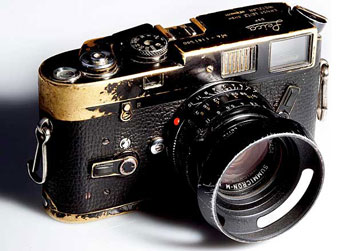Am moralizing again. This may sound like heresy to some of you, but I’m rather concerned about a camera’s mojo than absolute top-end specs. Here is why. Money can buy amazing quality these days. Be it for a thousand or several thousand dollars, the choice of awesome gear is yours. You can spend even 10k++ for a Leica and its great build quality and exceptionally good glass — above all, however, the camera feels unique and Leica land makes you part of a great heritage that inspires. Leica gives you hardly anything that’s way better than the rest of the market. But the camera has that mojo.

-P‘s mojo. | photoxels.com
Mirrorless cameras paired with prime glass can produce exceptional results these days, even though the sensor is smaller and depth of field will never be as shallow.
Or take the Fujifilm X series. Woohoo, even the less well-to-do is finally able to enjoy some of the M magic at a fraction of the price. Still, I have no problems spending 10k for Leica gear. Because it’s at least as important how a camera feels and how I connect to it. Contrary to conventional wisdom, it’s not only the photographer. It’s also the camera.
Never happened to you that you had great gear but somehow it didn’t feel right? Taking pictures was more routine than joy? And soon you didn’t feel anymore like picking up the camera? This will hardly happen with a camera you can connect to.
A camera lends its own mojo, and that can play an important role in your photography. You’ll be able to produce way better results.
It’s not only the feel, but also sound of the shutter, form factor and certain something that connects together to enable an experience that another camera simply cannot.
Photography is so much more than the sensor, DxOMark ratings, fps and a zillion ISO.
Chances are, once you start working with a camera you’re really longing for, the more it will complement your photography.
And that’s what a Leica offers. The prices are hideous — but only if you ignore the mojo. Somehow the M turns every photographer into an aspiring little HCB. You feel like following in a Magnum photographer’s footsteps. Add the — once you manage it — the ease of use and camera’s straightforwardness. With a Leica, you pay for a different experience with a high level of inspiration juice bundled in the package.
It’s a personal connection to the camera and system that inspires a totally different photography.
Because in the end, all cameras today are technically good enough.
But the shooting experience itself can be so much more rewarding. The camera has the power to change your photography entirely.
Chances are you keep that camera with a mojo. So you might pay more in the beginning, but with no need to upgrade, who cares about the newer, the faster, the better?
To conclude with Edward Weston:
The fact is that relatively few photographers ever master their medium. Instead they allow the medium to master them and go on an endless squirrel cage chase from new lens to new paper to new developer to new gadget never staying with one piece of equipment long enough to learn its full capacities, becoming lost in a maze of technical information that is of little or no use since they don’t know what to do with it.


